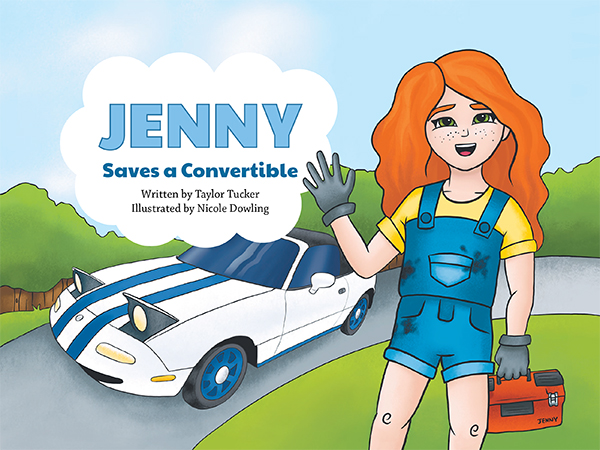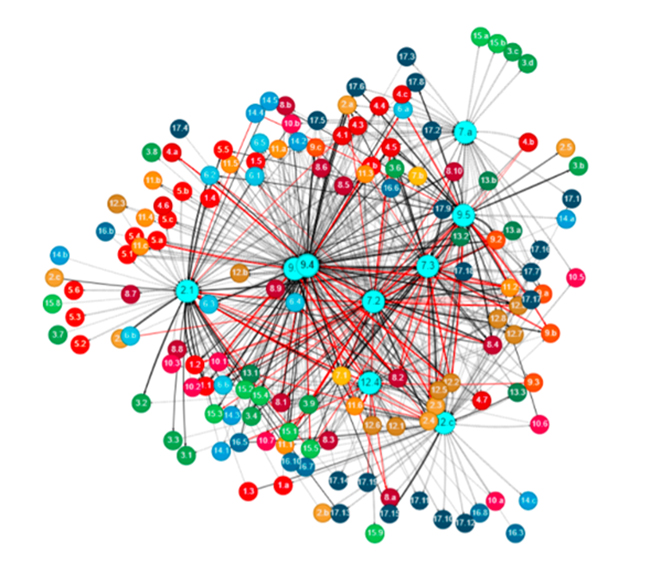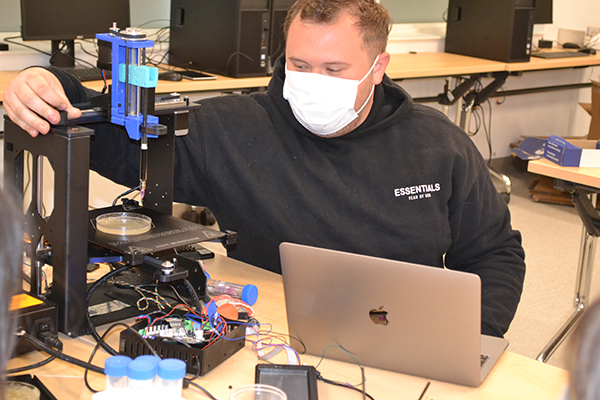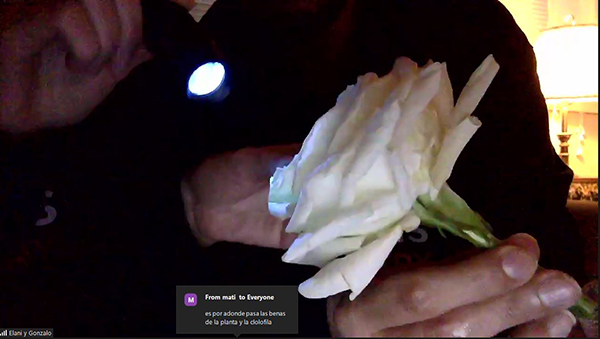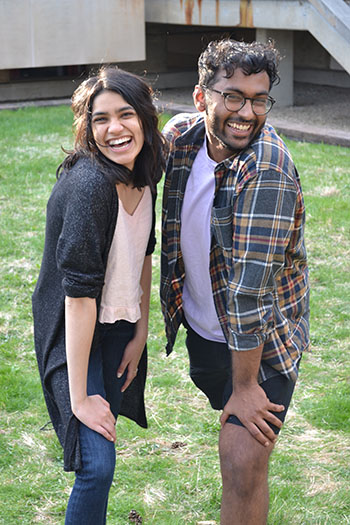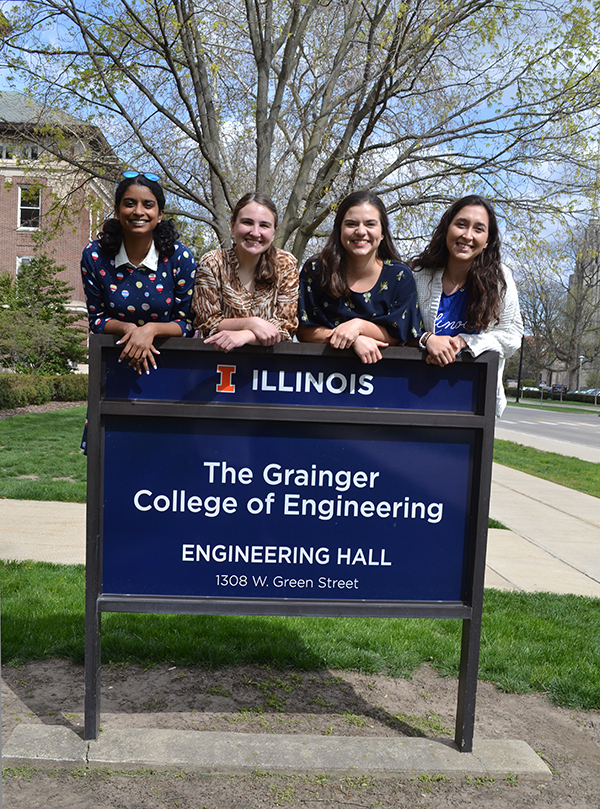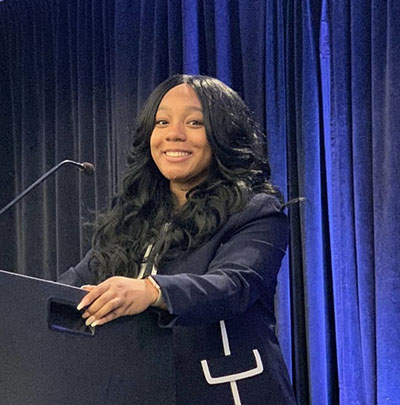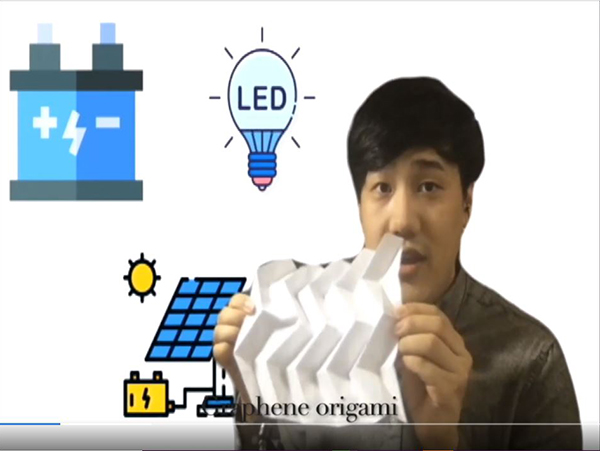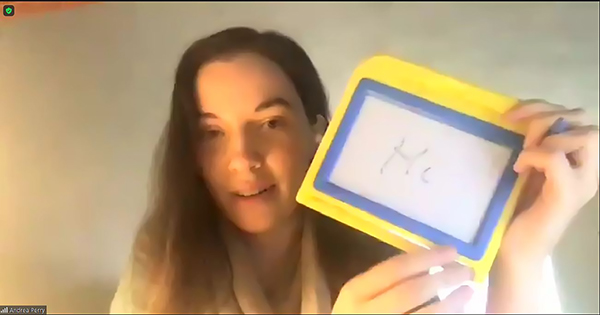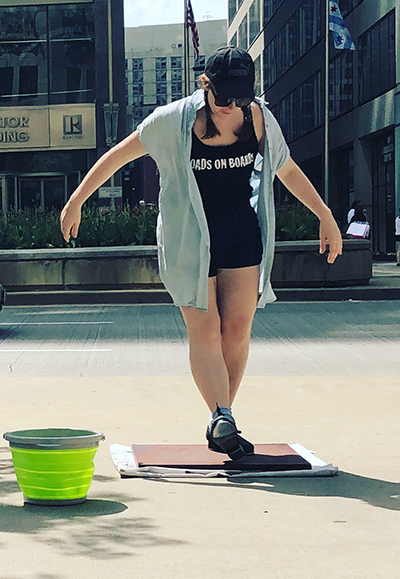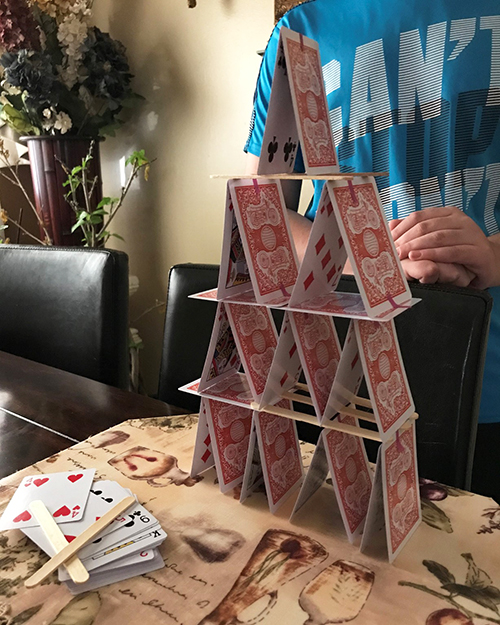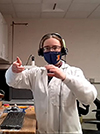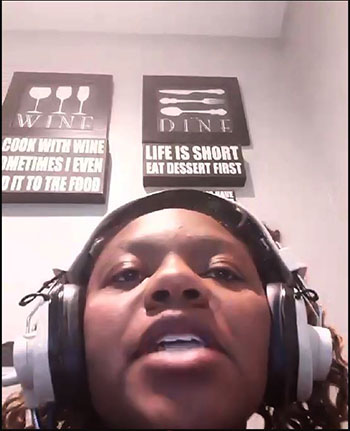NSBE’s Michaela Horn Exposes Franklin Middle Schoolers to Science, CS, and What Studying Engineering at Illinois is Like
.jpg)
A Franklin STEAM Academy 7th grader who has just eaten an orange slice dipped in baking soda reacts to the fizz as a chemical reaction occurs in his mouth.
May 25, 2021
On May 12th of the Spring 2021 semester, during a busy week of finals, Michaela Horn, an Illinois CS student and member of the Illinois chapter of the National Society of Black Engineers (NSBE) took a break from studying to squeeze in Zoom visits to several 7th grade science classes of Malik Berry and Jacob Henss at Franklin STEAM Academy, a Champaign middle school with an emphasis on STEAM (Science, Technology, Engineering, Arts, and Mathematics). In addition to leading students—both in person and via Zoom—in hands-on activities, Horn divulged what it was like to be an Engineering student at Illinois, talked about the support NSBE was providing her, plus answered both students’ and teachers’ questions. Probably most important of all, though, she—a Black woman in Engineering—served as a role model for the younger students.
During the activities, Franklin middle schoolers got a chance to interact with Horn, a rising junior who hails from a suburb of Chicago, Wheaton, Illinois, and whose dream job is to work in programming, doing software engineering someplace like Google. Horn taught the classes by demonstrating several fun STEM hands-on activities, which she encouraged the younger students to try as well. For instance, one demo included dipping oranges into baking soda and tasting them, which the most intrepid kids tried—more than once. The fizz they were feeling in their mouths was caused by citric acid in the orange reacting with the baking soda to create carbon dioxide bubbles. Another experiment was dropping an Alka Seltzer tablet into water. In this experiment, the fizz was caused by dropping the tablet (mostly anhydrous citric acid) into water (base) causing a reaction—carbon dioxide gas which bubbled up to the surface of the water.
Horn believes the outreach went well and that the kids enjoyed it. “Their questions definitely sounded as though they were engaged,” she remarks. “Further into the day, they did definitely ask more questions, but I feel like all the classes were so much fun to work with.”
.jpg)
Michaela Horn reacts to the fizz in her mouth after biting an orange slice dipped in baking soda.
One challenge Horn encountered when planning the outreach was devising activities in which all the younger students could participate since, although some were in the classrooms, many were still doing the class remotely at home. “Because, there are a lot of bigger projects that you can do,” she emphasizes, “but some of those students may not been able to actually get those materials on time or find them…So, trying to keep the activities as engaging as possible, but also as accessible as possible was definitely a little bit of a challenge, but I think we were able to do it in the end.”
Horn also believes helping with an outreach at the school netted additional benefits besides the STEM outreach itself. The fact that she is both a Black woman and an Illinois engineering student provided an excellent role model for the middle school students—especially the girls.
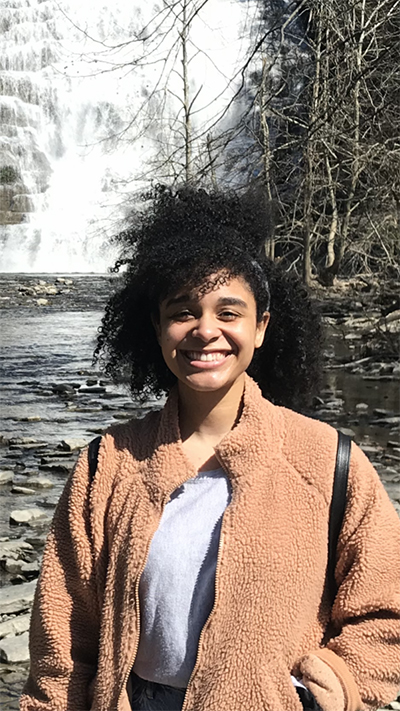
Michaela Horn, a rising CS junior at Illinois. (Image courtesy of Michaela Horn.)
“Minority groups are definitely underrepresented within engineering,” she acknowledges. “So, to be kind of a part of that is beneficial, because a lot of companies are looking for that, trying to find more representation,”she adds.
One thing Horn shared with Franklin students was why she’d ended up joining NSBE when she matriculated to Illinois. She’d joined a Black Student Alliance organization her senior year of high school. “I decided to join just to see what it was about. One of my friends asked me to,” she recalls. They’d told her “that it was kind of a nice atmosphere.” Realizing that she didn’t really know that much about the other black students at her school, she’d decided to immerse herself in that community and, thus, joined the club. Then after she graduated, she discovered that there was a similar group at Illinois. “So, I just kind of decided to keep going with that,” she explains.
She cites some of the benefits of being a member of NSBE “There’s this community that’s able to help you whenever you’re feeling lost,” she indicates. “Especially with the upperclassmen, they definitely helped me study or find different studying routines to help me actually do well in my classes.” She adds that she’s also found other folks in NSBE very supportive “especially when there’s nothing to do on campus…there’s always people available that can hang out or do other stuff with you.”
Another component of NSBE, of course, is outreach, such as that done through their partnership with Franklin STEAM Academy. Horn shares that she got involved in the outreach to Franklin because of the impact similar programs had had on her when she was younger. “Well, those kinds of outreach programs really helped me kind of decide that all this is something that I actually enjoyed doing,” she recalls. “So, I wanted to be able to provide that for other students as well. I thought that this would be a good opportunity for them.”
At the end of each session was a Q&A session, where students and teachers were invited to ask Horn questions. Some of these included: "What did you do that made you want to study Computer Science in college?" "Is Computer Science difficult?" "What was one of your favorite projects?" "What does your schedule look like?" and "How long are your school days?"
During her presentation at Franklin, Horn also discussed a STEM club—NSBE Jr.—that the school and NSBE intend to facilitate once things are fairly normal again at Franklin, hopefully next fall.
“We are obviously hoping to do more events in the future to help engage the students in person rather than over Zoom,” Horn shares. “So that will definitely be something to look forward to; hopefully, we will be able to do those.”
.jpg)
Franklin STEAM Academy 7th grader Harmony Shields.
Among the half dozen or so students participating in each class in person was Harmony Shields, a seventh grader who had enjoyed participating in the activities. For instance, she agreed that it was really cool to see an African-American woman leading the STEM activity and talking about computer science. “Yeah,” she acknowledges. “Cause you don't usually see that anywhere.”
One thing that stuck out to Shields was Horn’s alluding to the support she was getting through NSBE. “She mentioned she had a study group that she studied with, and I don't know if they still study with her or not, but that's what helped her in college.”
The 7th grader, who hopes for a career as a marriage and family therapist, assumes she’ll probably have to major in Psychology in college, and believes that she’ll have to take the basics like science, math, reading, and writing. “Then, of course, I have to take psychology to understand the brain and stuff,” she adds.
.jpg)
Malik Berry, one of Franklin’s 7th grade science teachers.
Spearheading the NSBE partnership and Michaela Horn’s visit was Franklin’s 7th grade science teacher, Malik Berry, whose classroom was also involved with the outreach.
Upon entering Berry’s classroom, one can see that he loves to tinker with technology—an excellent hobby for a middle school science teacher. He shares how he got “hooked.” His first year teaching science, after having his worst day ever since becoming a teacher, he’d started playing around with it, and has been doing so ever since. He'd asked himself, “How could I possibly become a better science teacher? How am I going to do it?’ and one thing he came up with was, “Well, I’ve got to learn all the different technologies.” After exploring several, including coding, he told himself, “Maybe I could do something different with that. Maybe I can bring it in.” So he decided to implement them in his classroom. Calling them Technology (Iron Man) Suits, Berry says one gizmo can turn on and control another, like “Alexa"; one of his “toys” includes a fan; one tells the time and temperature; another lights up like a marquee (see below to the left).
.jpg)
Malik Berry shows off one of his cool technology gadgets.
Berry is also a firm believer in giving his students STEM hands-on opportunities about both engineering and science. He calls their partnership with NSBE and Horn’s visit a good opportunity for the students be engaged, especially online and even in person at the school as well, and advocates bringing in some community members, like Horn, so everybody can work together to do a lab and some science experiences.
“Being here at a STEAM Academy, we really try to emphasize the STEAM aspects of it,” he explains. “And one of those is engineering. Another one of those is science itself, trying to combine some of those elements into one and having that experience for the students.” He adds that that definitely gives people who come into the school, like Michaela Horn “a platform to show what they know and to connect with some of our younger generation of soon-to-be scientists and engineers—especially for them to see someone that looks like them. I think they are very much excited to see the future that they could have as well.”
According to Jake Henss, another of the school’s seventh grade science teachers, having a Black, female CS student presenting to his students was quite beneficial.
.jpg)
Franklin 7th grade science teacher, Jake Henss (left) interacts with one of his students.
.jpg)
A Franklin seventh grader does the Alka Seltzer-water experiment.
“I think it's really encouraging for some of our students to see someone like them in a field that we typically don't associate that with. I think it's really encouraging to see, not only a person of color, but also a woman in that field. That can speak volumes to a lot of our students that are in their seats and who might think that they don't want to go into that field because it's not terribly represented by people like them in that field.” Henss adds that he thinks seeing someone who is like them—someone who is going out of their way to also communicate with students and work with them can be quite encouraging.
Henss can think of several of his students, in particular, for whom this might create a connection. In addition to Harmony, Henss says several of his students love computers, love working with computer engineering and coding and games, and who want to go into a field where they can make video games and use that field. “So, seeing her,” he adds, “and talking through some of that process, I think, sparked a lot of interest.”
Regarding their partnership with NSBE and future NSBE Jr. club, Henss indicates that prior to COVID-19, “People from the university actually came and worked with people in person here at school. We also got to go on field trips over to the university, which was really nice. I think after, hopefully, this COVID stuff has died down a little bit and we're able to open up the school to be a little bit more like normal, we'll get a lot more of that connection back.”
.jpg)
A Franklin seventh grader watches Horn's Zoom presentation on her laptop for instructions in how to do the Alka Seltzer-water experiment.
Zanne Newman, Franklin’s STEAM Coordinator, shares how the Franklin-NSBE connection came about. Three years ago, members of NSBE had contacted her and for two years prior to the pandemic, had come to the school once a month for about an hour and a half to do STEM activities—particularly targeting the school’s black and brown kids.
“They [the kids] got to meet all sorts of Black engineers and talk to them about what their careers were like,” she shares. “It was so engaging for our students and seemed fun for the U of I engineers as well!”
Newman recalls how engaged the Franklin students had been, reporting that they’d set out supplies and students had done a variety of experiments, figuring out what worked while designing their own version of the day’s activity and also learning how to collaborate as engineering teams.
“Students were fabulous at hands-on creative experiments,” she asserts, “and showed their engagement and ingenuity. I had asked teachers for lists of students whom they had found fidgety and sometimes disengaged. It was AMAZING to see them focused and excited about such projects as a "safe" egg drop, building the strongest bridge, and finding a way to create a boat that floats!”
.jpg)
A seventh grader watches the chemical reaction as the Alka Seltzer tablet dissolves in the water.
Author/Photographer: Elizabeth Innes, Communications Specialist, I-STEM Education Initiative
More: Franklin STEAM Academy, 2021
For additional I-STEM web articles about Franklin STEAM Academy, see:
- Musical Magnetism: Encouraging Franklin Middle Schoolers to Express Science Via the Arts
- Paquette Conveys Her Love of Science, Dance to Franklin STEAM Students Via Musical Magnetism
- On Her First Foray into STEAM, Kathy Walsh Acquaints Franklin Students with Microscopy, Haiku
- Musical Magnetism’s Destroy-A-Toy Activity: Messy, Definitely Curiosity-Driven and Educational!
- Franklin Steam Academy Students Experience High-Tech Science at MRL
- ENVISION PhD Students Use the Science of Breadmaking to Attract Franklin Eighth Graders to STEM
.jpg)
Franklin 7th graders enjoy Michaela Horn's presentation.
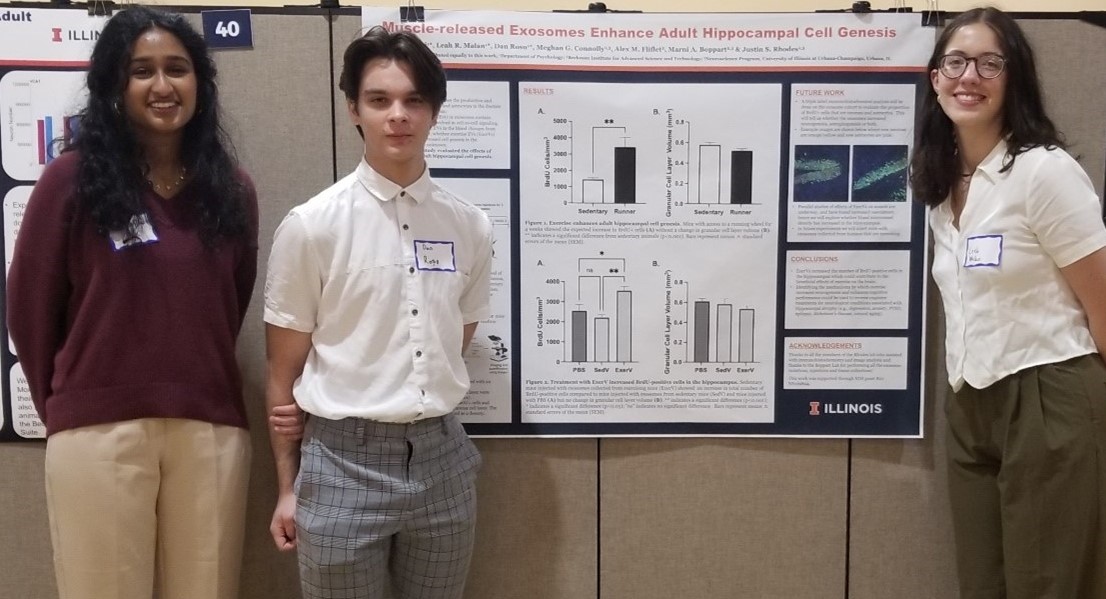
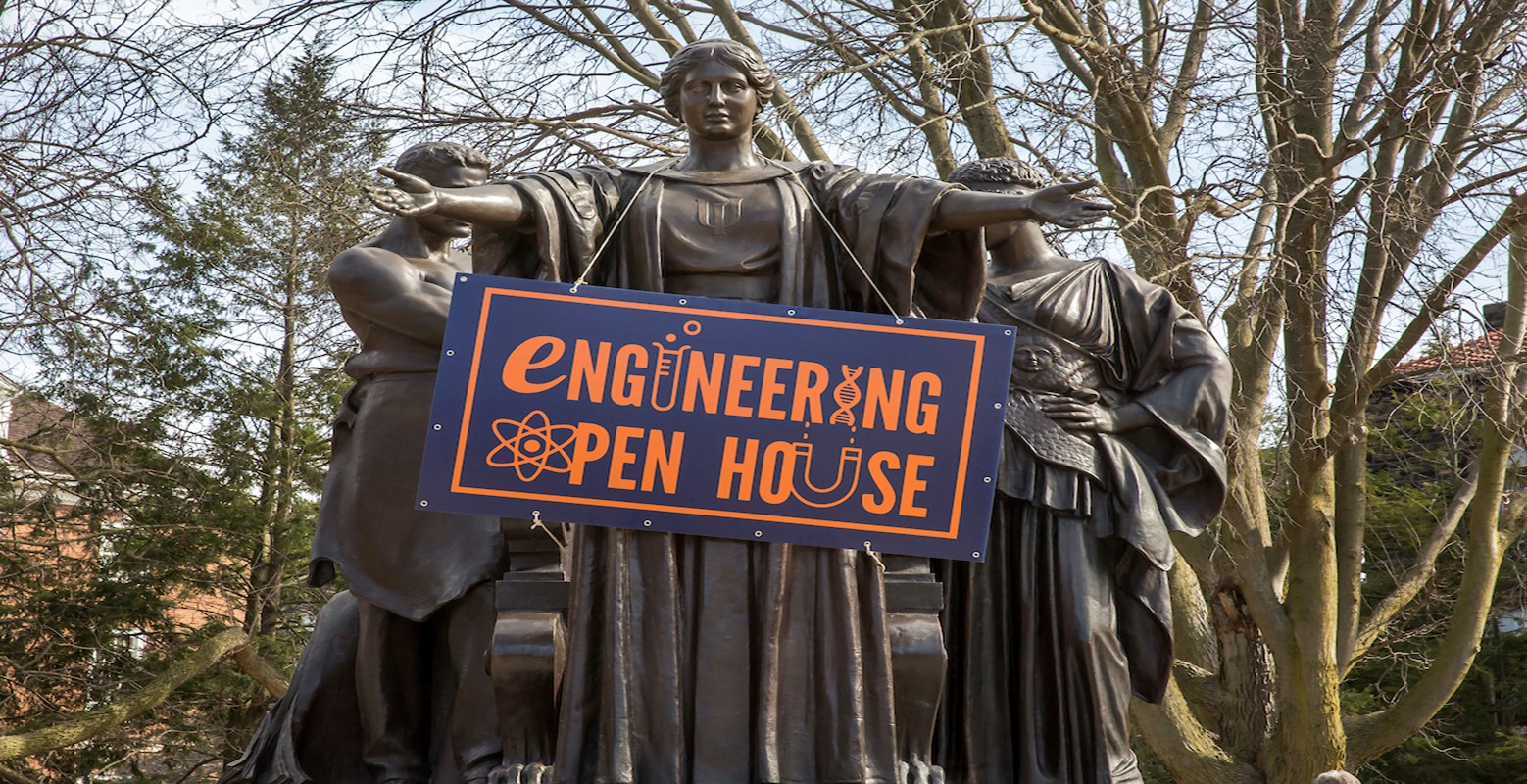
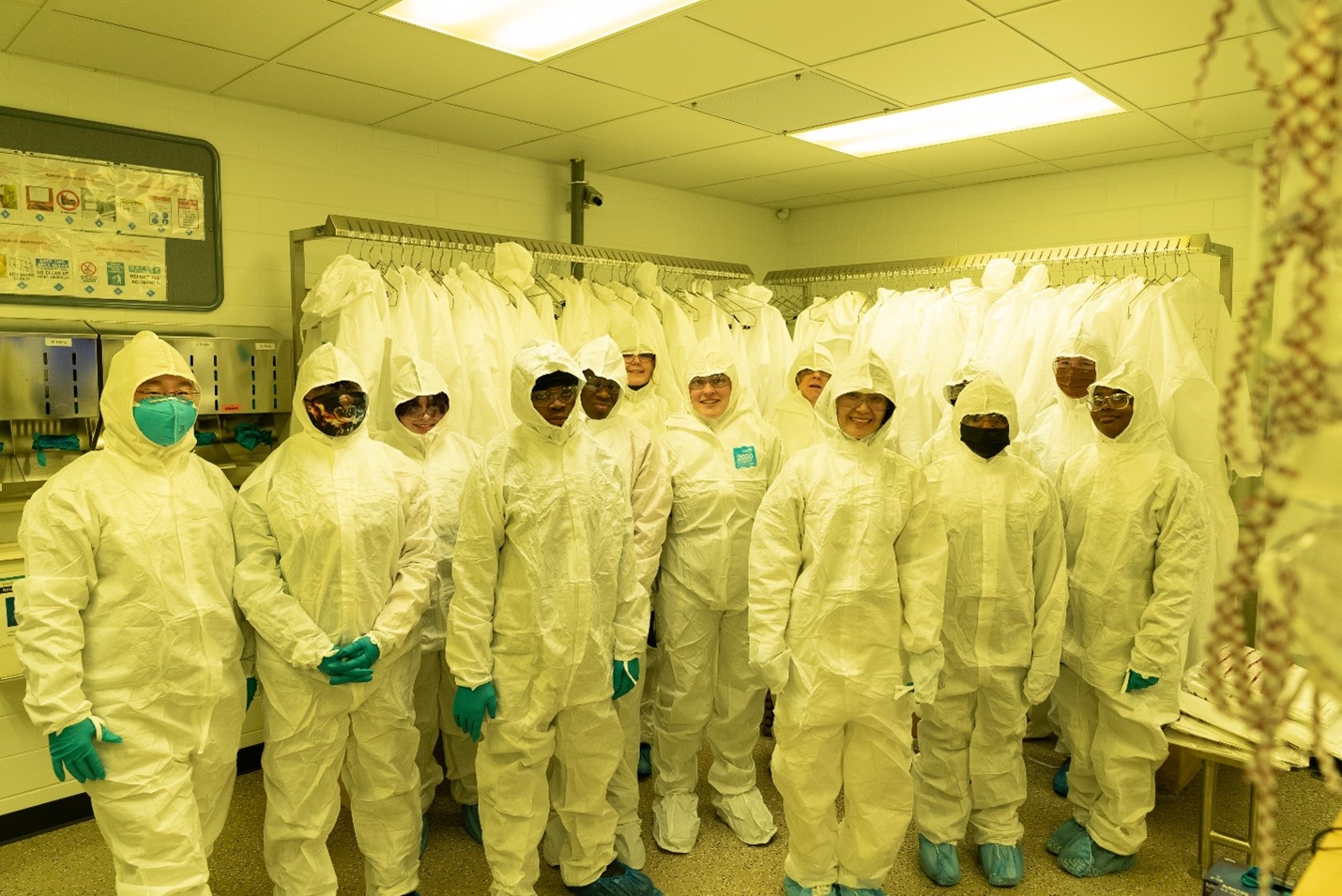
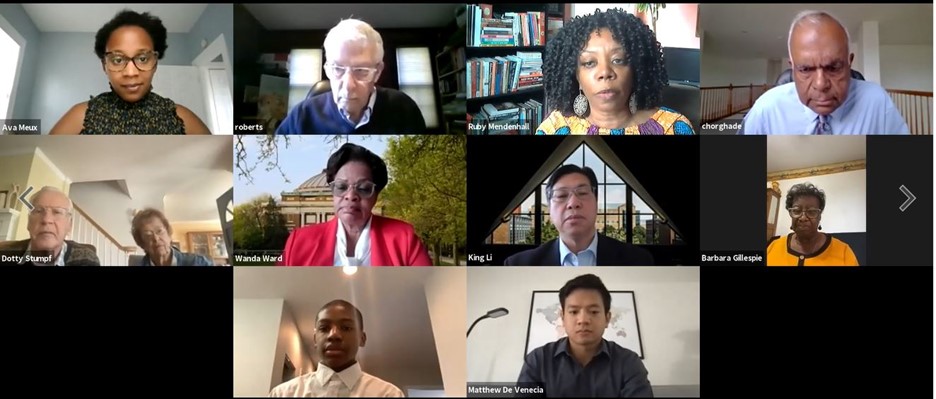
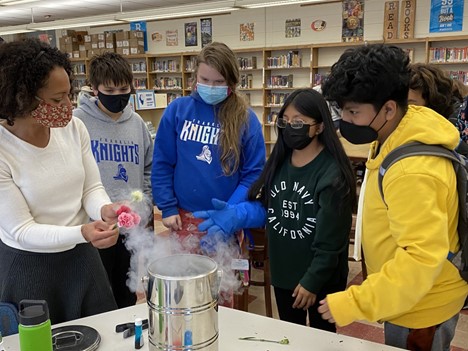
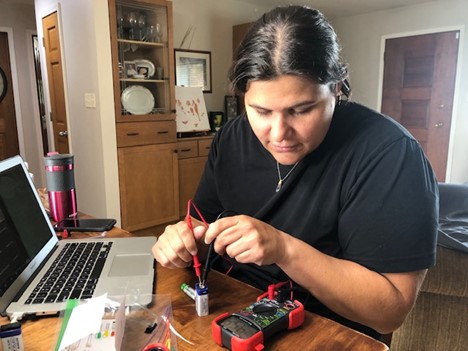
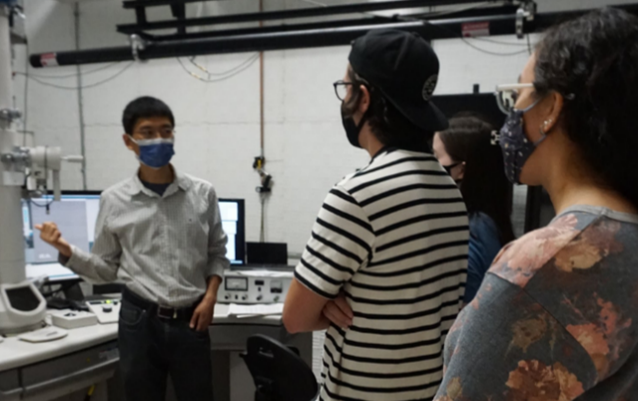
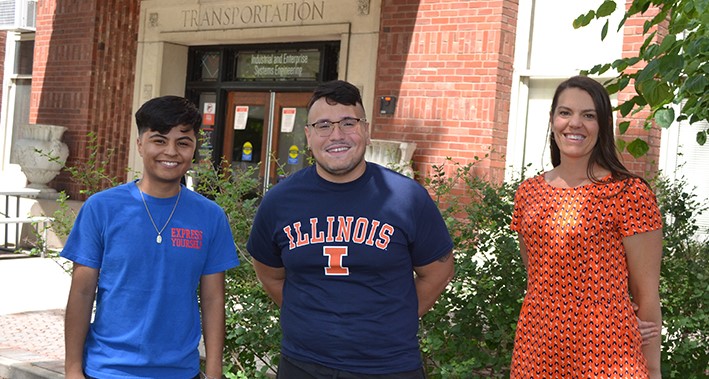


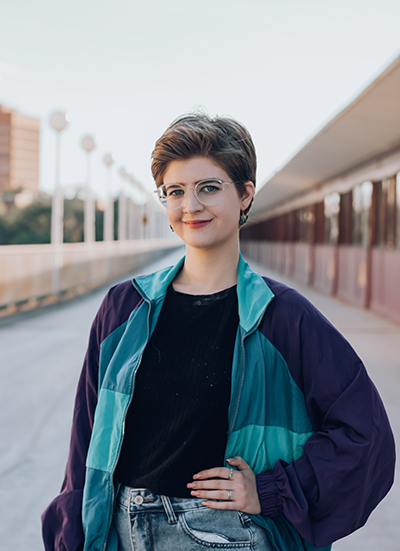
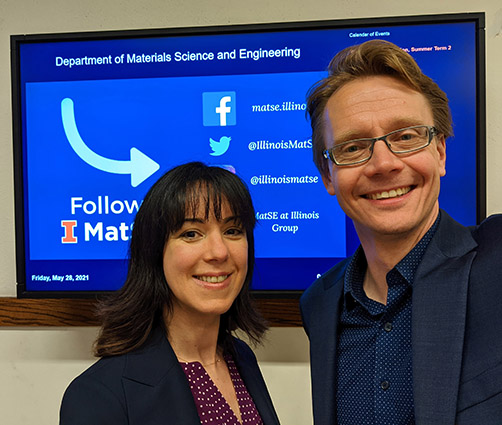
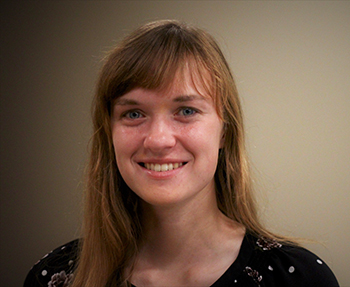
.jpg)
